|
|
|
|
|
Feb 2010 |
|
|
|
Sun 28 Feb 2010
Dedication
and Unveiling of the Chorley Pals Memorial on the Flat Iron,
Chorley |
|
Today was the
Dedication and Unveiling of the Chorley Pals Memorial on the
Flat Iron, Chorley. After photographing the memorial before the
event I walked to the T.A. Centre on Devonshire Rd to photograph
the parade preparations. Then it was back to the memorial for
the official unveiling. Itís been a long time coming but I hope
the people of Chorley appreciate it.
B Harris |

The memorial before the unveiling |

The Memorial on the Flat iron, Chorley. |
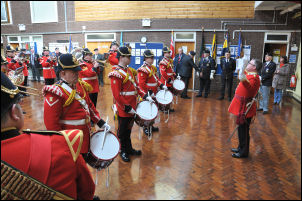
The band prepares at the T.A.
Centre, Devonshire Rd. |

The Parade enters Gillibrand St. |
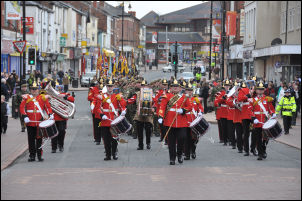
The Parade on Market St. |
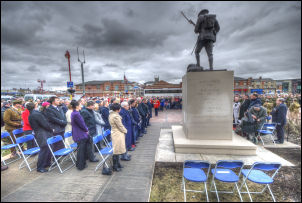
The Memorial |
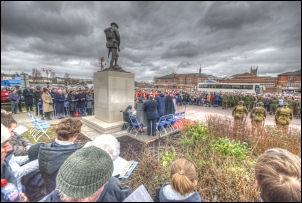
The Memorial |
| |
|
|
|
Sat 27 Feb 2010
Lancashire
Local History Federation Spring Day School
at the Social Centre adjacent to St Peterís Cathedral,
Lancaster. |
|
Lancashire
Local History Federation held its Spring Day School at the
Social Centre adjacent to St Peterís Cathedral, Lancaster. Some
subjects covered were Ben Edwards speaking about Prestonís 17th
century armorial glass window which originated from Hampton
Court. Then Margaret Edwards gave two presentations on stained
glass windows and the stained glass studios of Lancaster. James
price gave a presentation on the Lancaster Architects Paley and
Austin. It was interesting to note that the glass artists
Shrigley and Hunt did windows in Heapey Church and Abbotts did
one in Brindle Church. |
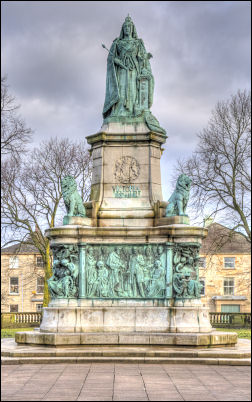
Memorial to Queen Victoria, Lancaster. |
|

St Peter's Cathedral, Lancaster |
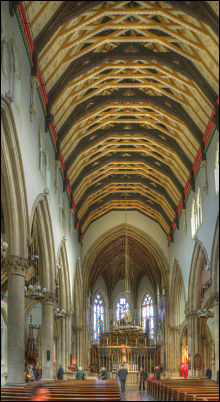
St Peter's Cathedral, Lancaster |

20th century
window of Herod. |
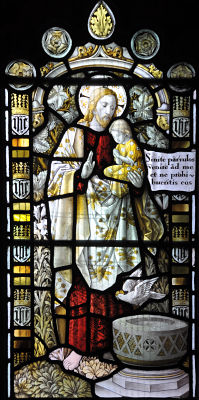
20th century
window of Jesus |
|
|
|
Tue 09 Feb 2010
Nigel Neil - From
Roundhouses to Remount Depot Ė 7,000 years at Lathom |
|
Nigel Neil, a
member of the Lathom Park Trust Archives Group, presented an
illustrated talk on 7,000 years of history at Lathom, near
Ormskirk.
Buildings great and small have risen and fallen at Lathom over
this broad sweep of history. Nigelís deep knowledge of Lathom
came through clearly with his narrative and the many images he
brought.
Much work in the form of archaeological excavations has taken
place at nearby Duttons Farm. Flints dating back 7,000 years
have been found there. There is also clear evidence of iron-age
roundhouses. Medieval pottery found there remains the largest
find of its kind in the north-west.
Deer parks were important and documents show that the area
called New Park was first a park before 1250. Over time the size
and shape of the park area changed considerably. Reference to
historic maps such as Speedís of 1610 put Lathomís size into
context when compared to the surrounding area. Also by way of
family trees Nigel was able to illustrate the ownersí, the Earls
of Derby, lineage back to the Norman Conquest. |

Nigel with some of the literature he brought
|
|
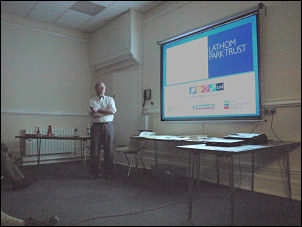
Nigel Neil |
Lathom is
famous for the 1644-45 Roundhead siege where the palace suffered
badly. By 1702 not a trace of the palace was left above ground.
Recent archaeological work using volunteer work and state of the
art geophysics has revealed many interesting things including
part of a moat, some 305m in diameter.
Lathom House was built in the 1730ís. Thanks to Lancashire
Record Officeís £53,000 purchase of Humphrey Reptonís
(1752-1818) ĎRed Bookí about Lathom House we have a wealth of
information that includes reports, recommendations, sketches,
plans and maps. Lathom House was demolished in the 1920ís.
Concluding Lathomís historic journey Nigel explained its
important First World War role as a Remount Depot. Between
September 1914 and November 1918, 263,000 horses were received
for the army to train for cavalry, pulling guns, wagons and
riding.
Lathomís important place, not just in Lancashireís history but
also in the countryís, was firmly established by Nigelís
informative talk.
Peter Robinson. |
|
 |
|
|
|
|
|
|
|